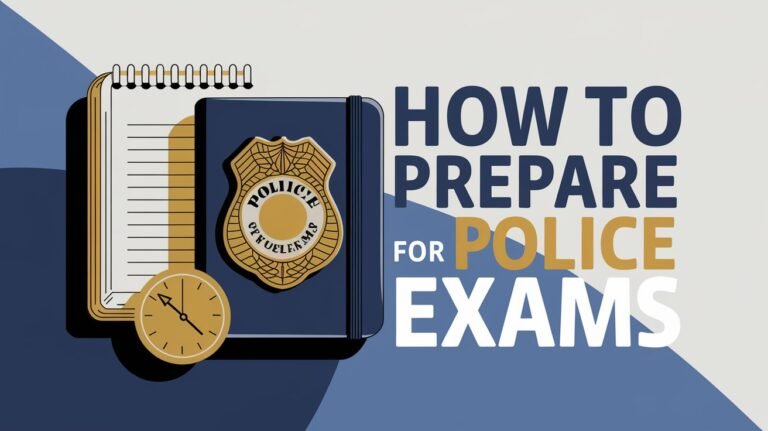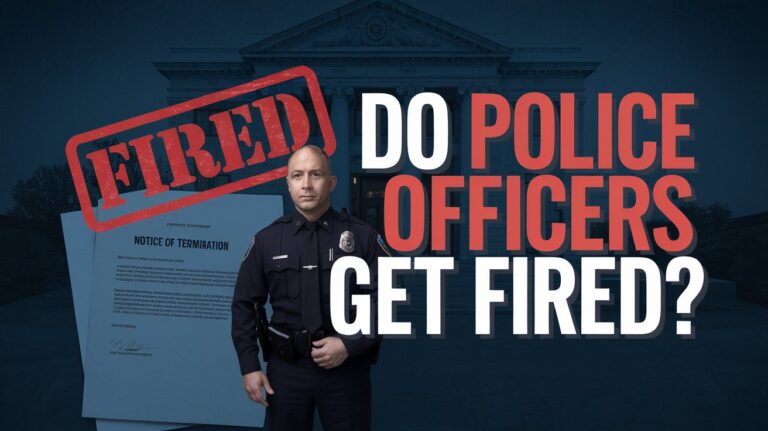Police Officer Medical Requirements: Health & Fitness Standards

To become a police officer, you must meet strict medical and fitness standards. These ensure officers are safe and effective. The standards check physical, visual, auditory, and cardiovascular health, plus overall fitness.
Law enforcement agencies set these high standards. They want to find candidates ready for police work’s challenges.
Keeping law enforcement healthy and fit is key. It protects officers and the communities they serve. This article will explore the medical and fitness tests for police officers. It will show the important steps in the selection process.
Police Officer Medical Requirements
Aspiring police officers must go through a detailed medical check. This check makes sure they are fit for law enforcement work. It looks at their heart health, vision, hearing, and muscle strength.
Physical Examination Protocol
A doctor checks the candidates’ physical health within 12 months before training starts. This check-up makes sure they can handle the job’s tough tasks. It checks their fitness, movement, and muscle coordination.
Medical Documentation Standards
After the medical check, the doctor gives a signed certificate. It has the candidate’s name, the exam date, and any health limits. This is a key part of the hiring process and must be included with the application.
Pre-employment Health Screening
- Tuberculosis (TB) testing using the Mantoux Tuberculin Skin Test (TST)
- Electrocardiogram (ECG) to assess cardiovascular health
- Chest X-rays, if indicated, to rule out any respiratory conditions
These health checks make sure candidates are ready for police work. They keep both the officers and the public safe.
Vision Standards for Law Enforcement
Vision standards for law enforcement officers are key to their job performance. These standards include visual acuity, color vision, depth perception, and peripheral vision. They ensure officers can do their jobs well.
Officers must have good distant vision, corrected to 20/20 in each eye. They also need to pass a color vision test. This test checks if they can see colors correctly.
Depth perception is also important. Officers must be able to judge distances accurately. Their peripheral vision must be over 120 degrees in each eye.
Those with glasses or contact lenses have specific rules. Glasses or hard contact lenses must correct vision to 20/20. Soft contact lenses require a six-month wear history and a duty wear agreement.
Officers with certain eye surgeries or lenses have extra rules. For example, those with radial keratotomy must wait a year and have 20/20 vision. Orthokeratology lens users need a year of successful wear and a duty wear agreement.
The police vision requirements, law enforcement eye exams, and visual acuity standards are set to help officers see well. This ensures they can do their jobs safely and effectively.
Essential Hearing Requirements
Law enforcement officers need to have good hearing to do their jobs well. They go through audiometric testing with special equipment. This test checks if their hearing is within the allowed limits.
Candidates with hearing aids are tested both with and without them. This ensures they can meet the police hearing standards.
Audiometric Testing Standards
Police officers-to-be get a detailed hearing test. This test checks if they can hear different sounds clearly. The test makes sure their hearing is good enough for the job.
If they don’t pass the first test, they might have to take more tests. These tests cost them, but they help figure out if they can be police officers.
Hearing Aid Policies
If a candidate’s hearing is not perfect but not too bad, they might need to use a hearing aid. But, if their hearing is very poor, they won’t qualify to be a police officer.
Sound Recognition Requirements
Being able to recognize sounds is key for police officers. A study from 1998 showed that they need to understand speech even when it’s loud. They also have to be able to detect and locate different sounds.
Cardiovascular Health Standards
Police officers need strong heart health to do their job well. They face a higher risk of heart problems than most people. Sadly, police officers often have heart attacks much earlier, at just 46 years old, compared to 65 for others.
It’s vital to check their heart health and fitness before they join or stay in the force. This includes tests like the electrocardiogram (ECG) and the 1.5-mile run. These help spot heart issues early and ensure officers are fit enough for duty.
Keeping officers healthy is crucial for their safety and the agency’s budget. A heart problem can cost a police department up to $750,000. So, making sure officers are in good shape is key for everyone’s benefit.
| Metric | Standard |
|---|---|
| Body Mass Index (BMI) | 18.5 to 29.9 |
| Blood Pressure | Below 140/90 mmHg |
| Respiratory Health | Spirometry tests for FVC and FEV1 |
| Cardiovascular Fitness | Successful completion of 1.5-mile run |
Focusing on police officer heart health, cardiovascular fitness for law enforcement, and cardiac screening for police, agencies can keep their officers healthy. This ensures they can do their job safely and stay well throughout their careers.
Physical Fitness Test Components
Law enforcement agencies across the United States use detailed physical fitness tests to check candidates for police jobs. These police fitness test components usually include running tests, strength checks, and agility challenges.
Running Assessment Standards
The 1.5-mile run is a common test. It shows how well a person’s heart and lungs work. Some law enforcement physical assessments also have a 300-meter sprint. This tests how fast a person can go without needing oxygen.
Strength Testing Requirements
Strength tests often include push-ups, sit-ups, and bench presses. They count how many times you can do these in 1-2 minutes. These agility course for officers check your muscle strength and endurance.
Agility Course Elements
- Obstacle courses that mimic real-life situations, like climbing, crawling, and dodging
- Pursuit running tasks to test speed and agility
- Rescue simulations, like dragging a heavy dummy
These police fitness test components evaluate a candidate’s physical fitness, endurance, and job skills. They help ensure officers can handle their duties well.
Cooper Standard Fitness Evaluation
The Cooper Standard Fitness Evaluation is a key tool for law enforcement to check their officers’ fitness. It includes three main parts: one-minute push-ups, one-minute sit-ups, and a 1.5-mile run. The scores are based on age and gender, making it fair and accurate.
Many law enforcement groups, like the New York State Police and the MTA Police, use this test. It makes sure officers are fit enough to do their jobs well.
- The 1.5-mile run tests cardiovascular endurance, with candidates required to complete the distance in the shortest time possible.
- The one-minute push-up component assesses upper body strength, with candidates performing as many proper repetitions as they can within the time limit.
- The one-minute sit-up test evaluates core strength and endurance, challenging candidates to complete as many correct repetitions as they can.
- The Sit and Reach test measures flexibility in the lower back and hamstrings, with candidates reaching as far forward as possible while seated.
To prepare for the Cooper Standard, you need a good training plan. This should include running longer distances, interval training, and exercises for strength and flexibility. It’s also important to stretch regularly.
Sticking to a training plan and focusing on proper form can help you do well in the Cooper Standard. It shows you’re ready for the challenges of law enforcement.
Medical Disqualification Criteria
To become a police officer, you must meet strict medical standards. This ensures the safety of both the officer and the community. The criteria for medical disqualification cover many health issues that could affect job performance.
Chronic Health Conditions
Some chronic conditions can prevent you from becoming a police officer. This includes vision problems, hearing issues, and heart conditions. Diabetes can also be a barrier if you have severe complications or a history of low blood sugar episodes.
Temporary Medical Conditions
Temporary health issues are reviewed individually. They determine if they could hinder an officer’s job duties. Recent injuries, surgeries, or illnesses may need time to heal before you can start.
Appeal Process
If you don’t meet the medical standards, you can appeal. The appeal goes to a Medical Review Board. They look at your medical history and current health to see if you can be a police officer despite any issues.
Drug Screening Protocols
Drug screening is key in hiring police officers. Candidates must pass a urine test to check for illegal drugs or medicines that could affect their work. They test for marijuana, cocaine, opioids, and amphetamines.
Police follow strict rules for these tests. At least 10% of officers are tested twice a year. This makes sure the tests are fair and random. If an officer reveals who’s being tested, they face disciplinary actions.
The tests follow rules from Executive Order 12564 and the Department of Health and Human Services. Medical Review Officers check the results. They make sure the tests are done right and keep the results private.






